This guide will assist in identifying types of anemonefish as there is estimated to be approximately 30 different types of Anemonefish. One of the most popular, and most recognizable anemonefish, is the one affectionately nicknamed “Nemo” after the popular Pixar film.
While “Nemo” brought attention to one type of anemonefish, there are actually approximately 30 different types of anemone fish. These fish are the subfamily of Amphiprioninae, which is the in the family Pomacentridae. You can read more about the scientific side of anemonefish here.
Anemonefish are most recognizable due to their symbiotic mutualisms with sea anemones. While you can identify anemonefish by different factors such as:
- Coloring
- Stripes
- Stripe patterns
- Stripe location
Another great means to identify an anemonefish is by the host anemone. Some anemone fish can only cohabitate with a particular breed of anemone.
Use the below guide to help in identifying types of anemonefish on your next dive trip.
This list will continue to grow as my personal photo collection grows.
Disclosure: This post contains affiliate links. By purchasing through these links, we get a small commission at no additional cost to you.
*Oceans to Alpines is also a participant in the Amazon Services LLC Associates Program. As an Amazon Associate, we earn from qualifying purchases.
Amphiprion ocellaris (Ocellaris, False Percula, aka Clownfish)
Starting this guide to identifying types of anemone fish with the most recognized and popular anemonefish: Nemo.
A fun fact about Nemo is that there are actually two types of clownfish. There is what is called the False Percula and the True Percula. The false is what is pictured above – looks similar to Nemo, right? It could be!
False Percula are identified by the classic orange and three white stripes. How these Ocellaris are different than the true is due to the fact that the white is outlined with very thin (sometimes no) black lines.
A true percula will have thick black borders around the white which is the main factor in identifying the difference between a true and a false.
So which type is Nemo? It’s hard to tell but this is how identifying types of anemonefish comes in helpful. In this case of analyzing Nemo, the black lines are noticeable, but are they really “thick”? The next way would be to count the number of dorsal spines. A true Percula will have 10 and the False Percula 11. However, the animation only gives them 6, which isn’t the number of any of the anemone fish. Oh well! Overall, Nemo is a member of the Ocellaris of some type.
Anemone hosts for the False Percula:
- Heteractis magnifica (Magnificent Sea Anemone)
- Stichodactyla gigantea (Giant Carpet Sea Anemone)
- Stichodactyla mertensii (Merten’s Carpet Sea Anemone)
Amphiprion clarkii (Clarks Anemonefish, Yellowtail clownfish)
I am featuring this one second due to the fact I feel this anemonefish is one of the most frequently spotted. The Clark’s anemonefish can also be found in a number of hosts as my photos above show and is the anemone fish with most potential hosts.
Additionally, Clark’s anemonefish is one of the largest anemone fish.
Clark’s anemonefish are easily identifiable by the two large white bands and a white band by the tail. Additionally, their tail is typically “yellow”. Which earns them the name “Yellowtail clownfish”.
I have found from personal experience if you are near their host anemone these anemonefish are more likely to be “aggressive”. Well as aggressive as a fish can be. The anemonefish will come out of the anemone and swim about in front and “make moves” towards you however not actually do anything to touch you.
Anemone hosts for the Clark’s Anemonefish:
- Cryptodendrum adhaesivum
- Entacmaea quadricolor (Bubble-tip anemone)
- Heteractis aurora (beaded sea anemone)
- Heteractis crispa (Sebae anemone)
- Heteractis magnifica (magnificent sea anemone)
- Heteractis malu (delicate sea anemone)
- Macrodactyla doreensis (long tentacle anemone)
- Stichodactyla gigantea (giant carpet anemone)
- Stichodactyla haddoni
- Stichodactyla mertensii (Mertens’ carpet sea anemone)
Amphiprion frenatus (Tomato Clownfish)
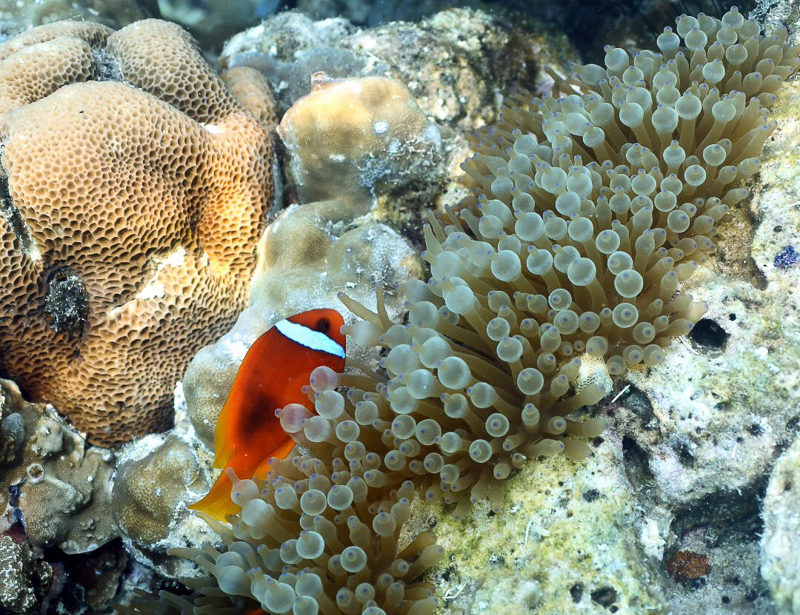
The Tomato Clownfish looks very similar to the Cinnamon or Black and Red Anemonefish. The difference is the size of the white bar.
Additionally, the male tomato clownfish lacks the dark coloring that the female tomato clownfish has and that the red and black anemonefish has. The one pictured above is a male tomato clownfish due to the lack of black spotting.
Below you will find photos of the female tomato clownfish with the dark sides. The reasoning that these are different than the Red and Black is the lower pevic fins are red/orange instead of black.
Host Anemones for the Tomato Clownfish:
- Entacmaea quadricolor (Bubble Tip Anemone)
- Heteractis crispa (Leathery (Sebae) Sea Anemone)
Amphiprion akallopisos (nosestripe clownfish or nosestripe anemonefish, skunk clownfish)

This anemonefish looks very similar to the pink skunk clownfish which is featured below. The primary difference between the two? The white stripe behind the eye. The nosestripe clownfish only has a stripe that goes down along the spine instead of the additional one located behind the eye. These ones were spotted in the Similan Islands of Thailand.
Host anemones for the nosestripe anemonefish:
- Heteractis magnifica (magnificent sea anemone)
- Stichodactyla mertensii (Mertens’ carpet sea anemone)
Amphiprion perideraion (pink skunk clownfish, pink anemonefish)
The pink skunk clownfish or pink anemonefish is very similar in body color to that of the skunk anemonefish. This is a great example of why identifying types of anemonefish can be difficult. As previously described though the key identifying factor between the two different types of anemonefish is the white stripe located behind the eye.
Additionally, the pink skunk clownfish can be found in more host anemones than that of the skunk anemonefish.
Host anemones for the Pink anemonefish:
- Heteractis crispa (sebae anemone)
- Heteractis magnifica (magnificent sea anemone)
- Macrodactyla doreensis (long-tentacle anemone)
- Stichodactyla gigantea (giant carpet anemone)
Amphiprion polymnus (Saddleback anemonefish)
The distinctive identifying feature of the Saddleback is the “saddle” that is apparent on the spine of the fish. Unlike most other anemonefish with the long body stripes, the Saddleback is a bit wider and does not go the complete body.
Ultimately, making the fish look like it has a saddle on it as if it were a horse.
The Saddleback can be found in a variety of colors, from black to orange.
Another easy way to know you found a Saddleback? The host anemone of the Saddleback Stichodactyla haddoni (Saddle carpet anemone) is typically found in sandy surfaces. The specimen I found featured in the photo above from Okinawa, Japan, was in a massive sandy clearing and the only fish in sight!
Host Anemones for the Saddleback Anemonefish
- Heteractis crispa Sebae anemone (rarely)
- Stichodactyla haddoni (Saddle carpet anemone)
Amphiprion nigripes (Maldive anemonefish or blackfinned anemonefish)
The easiest way to identify this anemonefish is to first look at your geographical location. If you are not in the Maldives, you will not be finding this anemonefish.
Like the Cinnamon Anemonefish or the Tomato Anemonefish this anemonefish also only has one stripe. However, the second key identifying factor after location is the coloration. The Maldive Anemonefish is a very light orange coloration instead of the bolder color reddish color of the other two types. Additionally, you will find that their pelvic and anal fins are black.
Host Anemone for the Maldive Anemonefish:
- Heteractis magnifica (magnificent sea anemone)
Amphiprion bicinctus (Red Sea Anemonefish)
The Red Sea Anemonefish is easy to mistake as a Clarkii. Overall, the Red Sea has a lot of similarities to the Clarkii with coloration, and the two large body stripes. However, a clear indication of difference is that the Red Sea anemonefish does not have the white band at the tail which Clarke’s anemonefish does.
Additionally, you will typically not see a Clarkii beyond Oman. Therefore, if you are in the Red Sea.. you are most likely seeing a Red Sea Anemonefish!
Host Anemone for the Red Sea Anemonefish:
- Entacmaea quadricolor Bubble-tip anemone
- Heteractis aurora white beaded anemone
- Heteractis crispa Sebae anemone
- Heteractis magnifica magnificent sea anemone
- Stichodactyla gigantea giant carpet anemone
Further Fish Identification
If you are looking to learn more about identification of species then check out these following books on amazon:


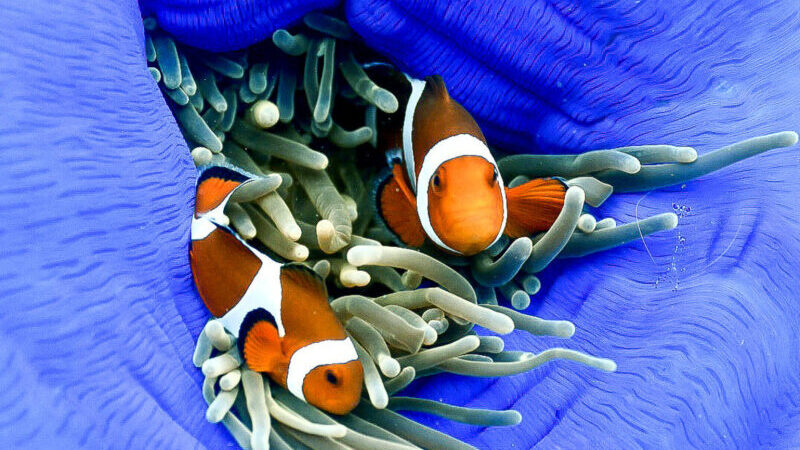
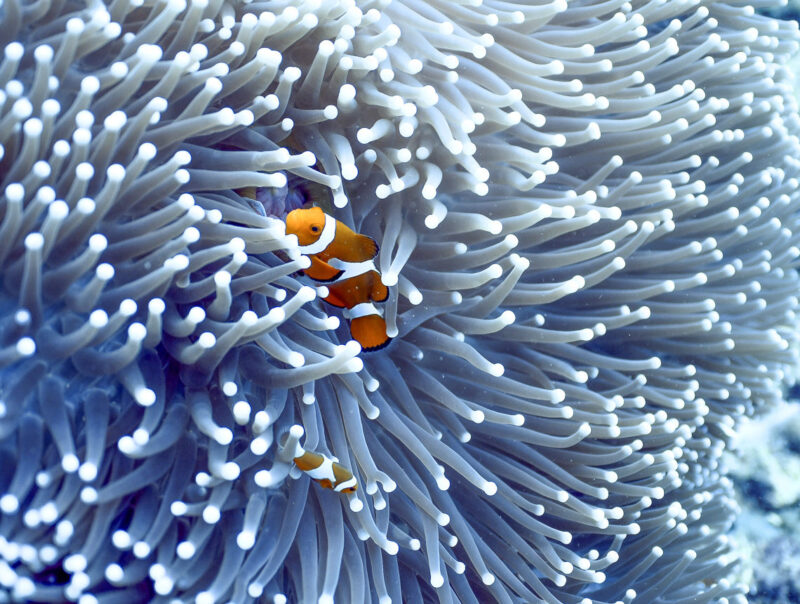
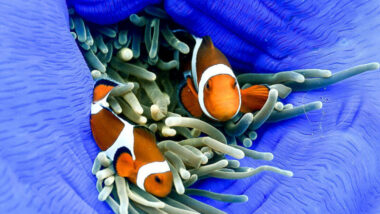
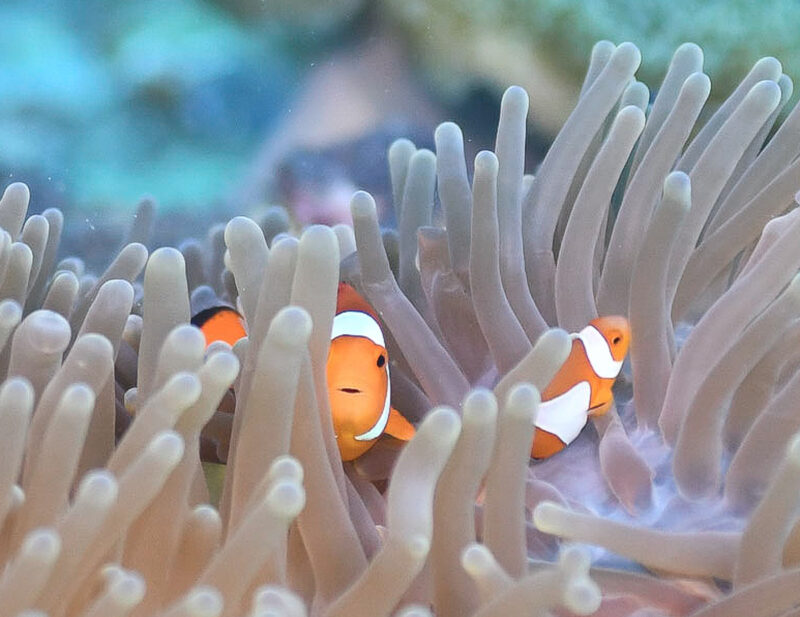
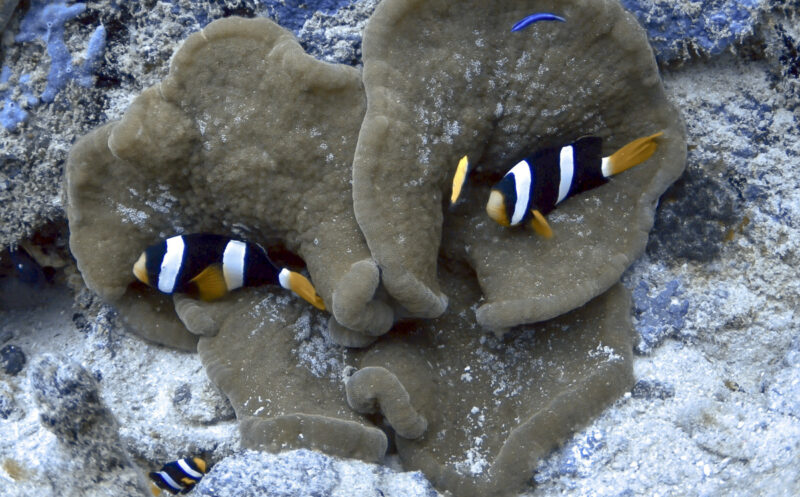

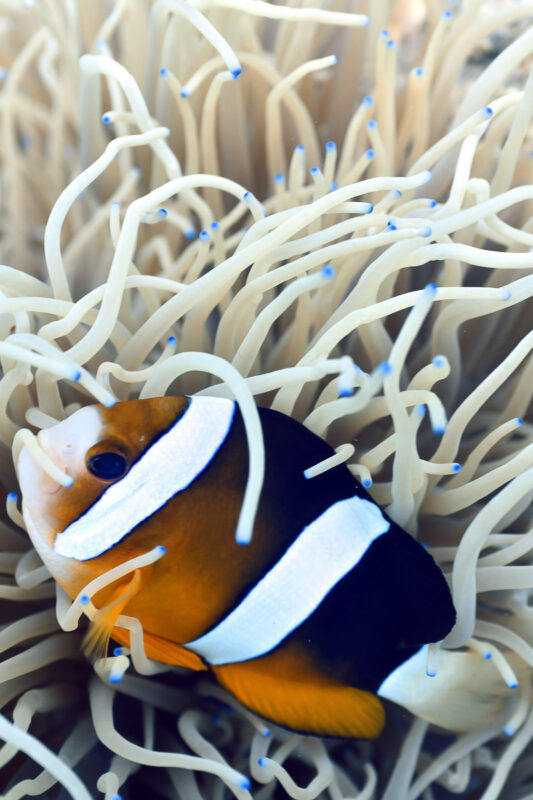
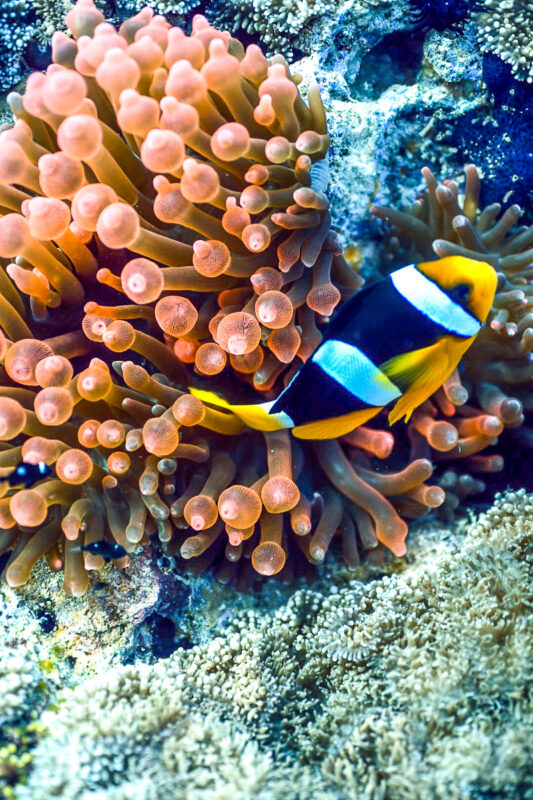
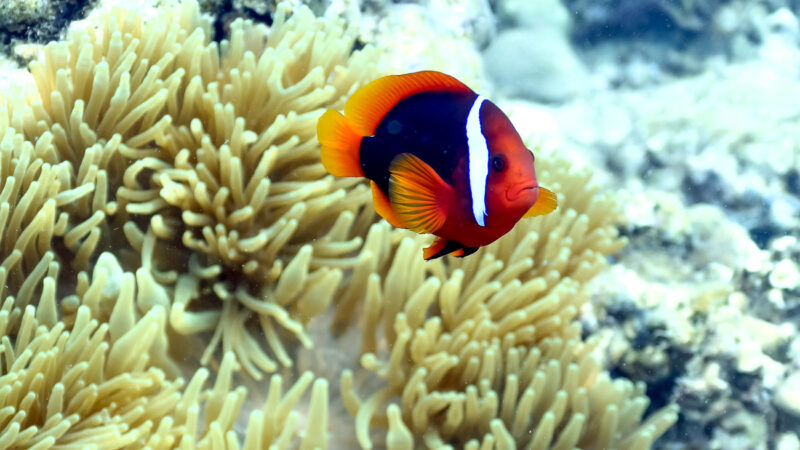
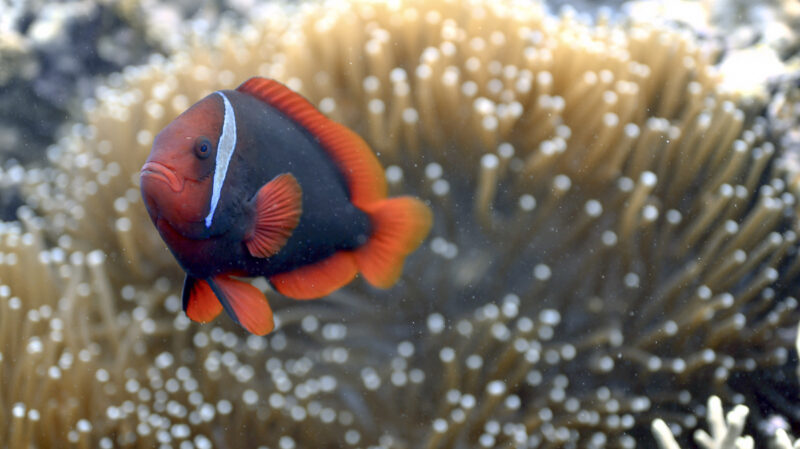
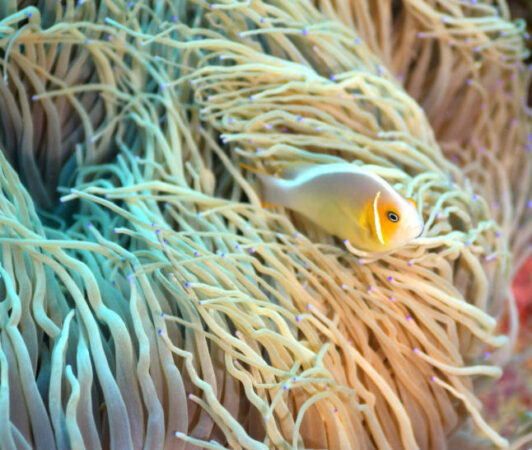
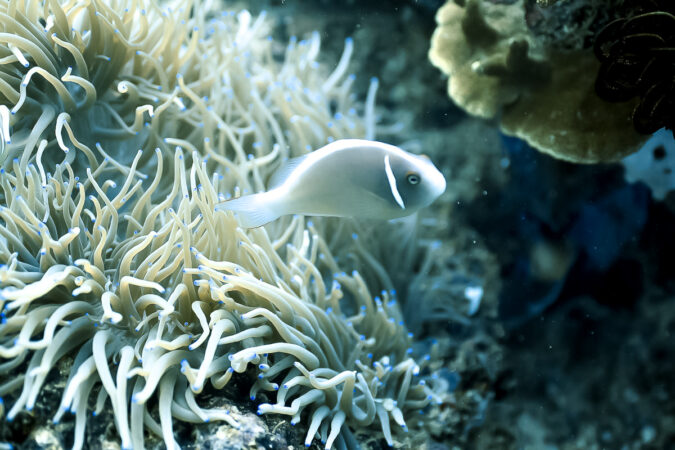
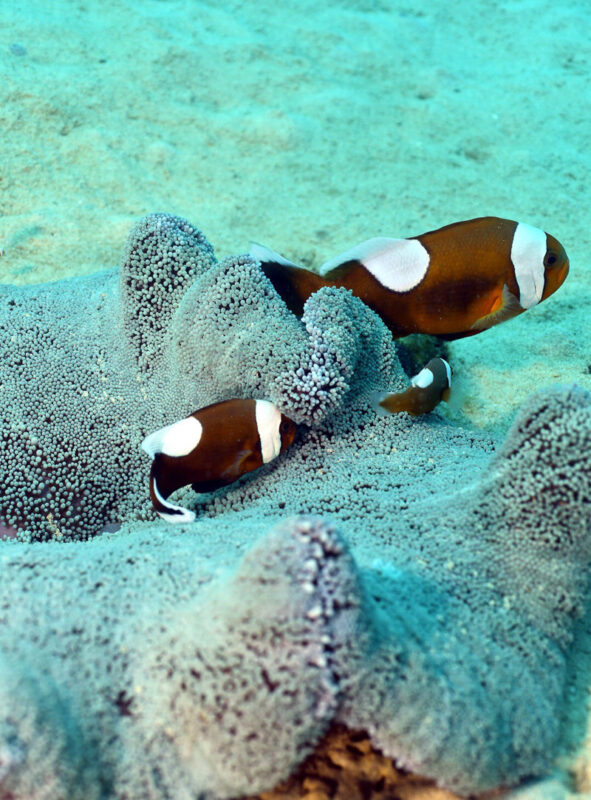
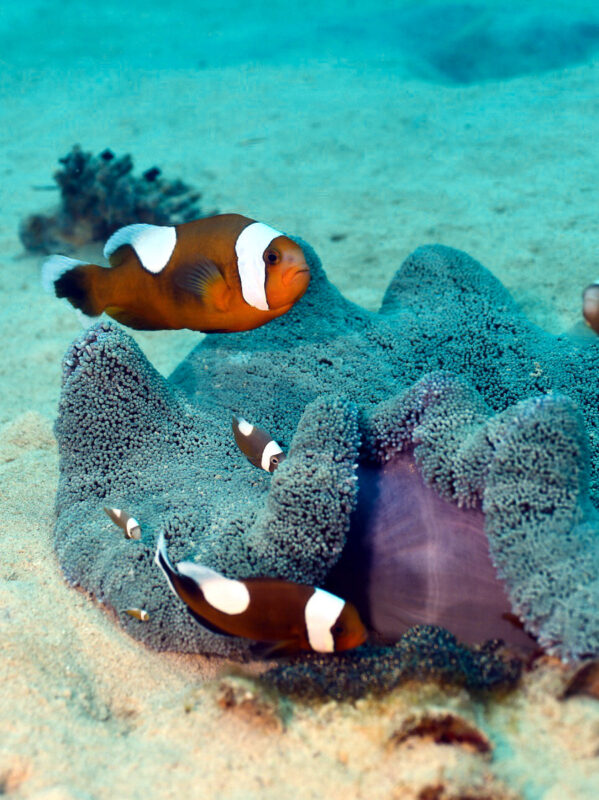
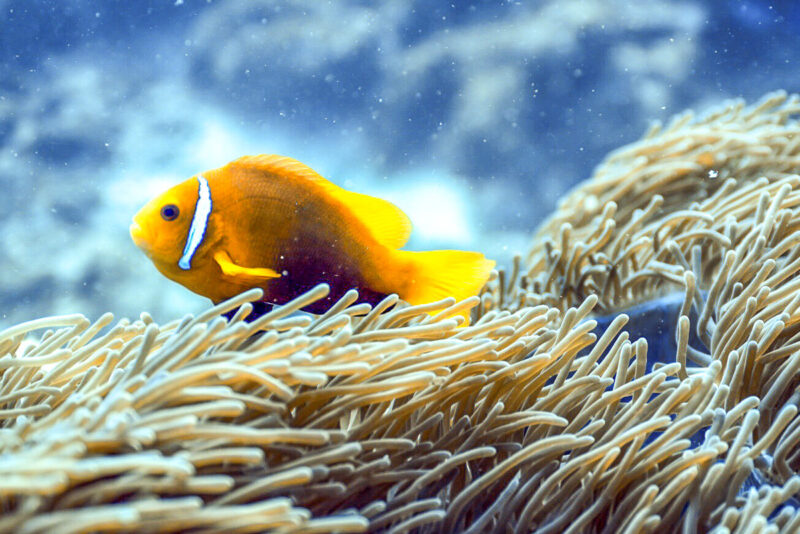
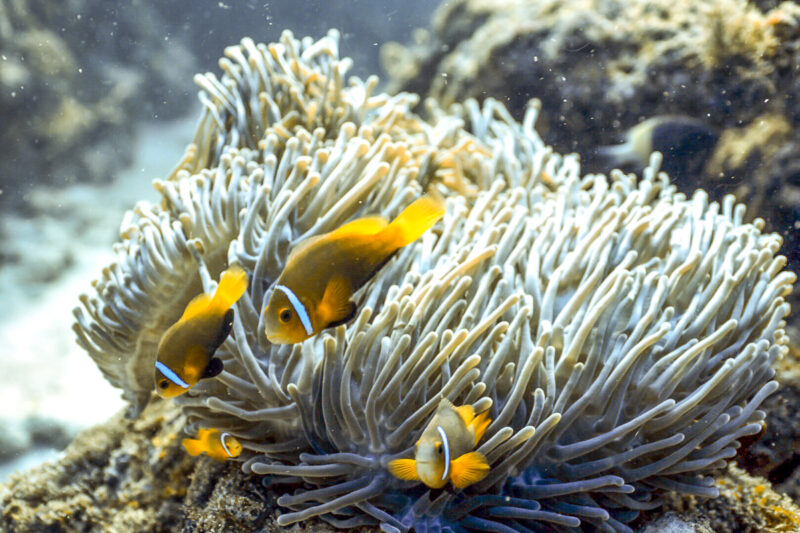
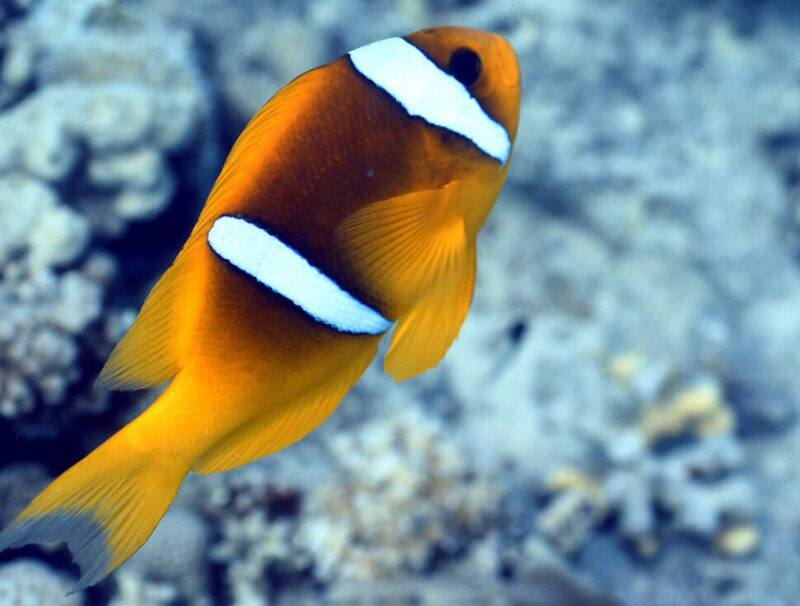
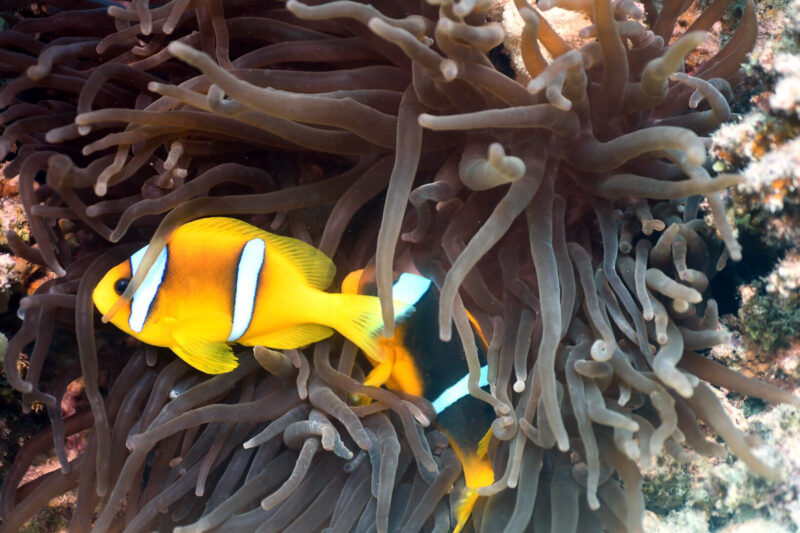
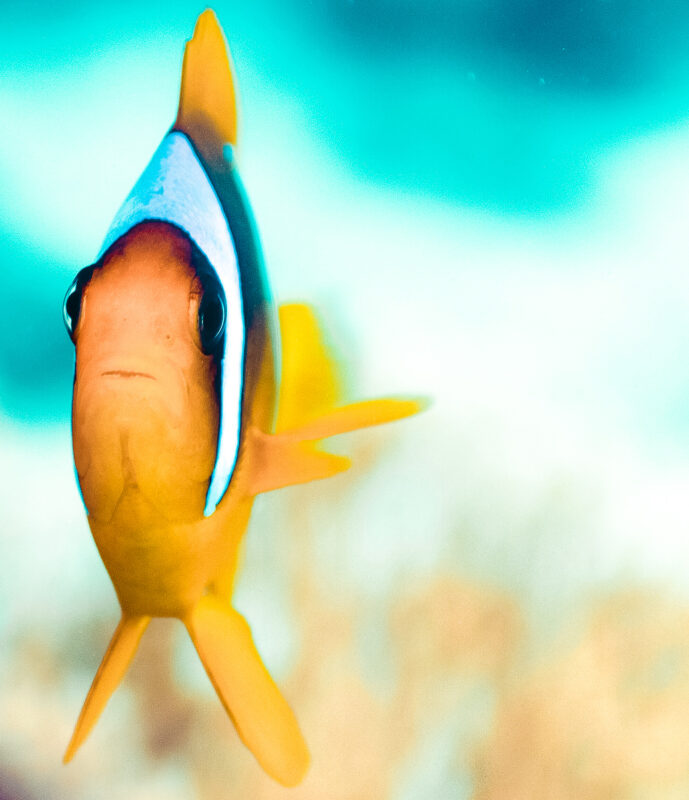

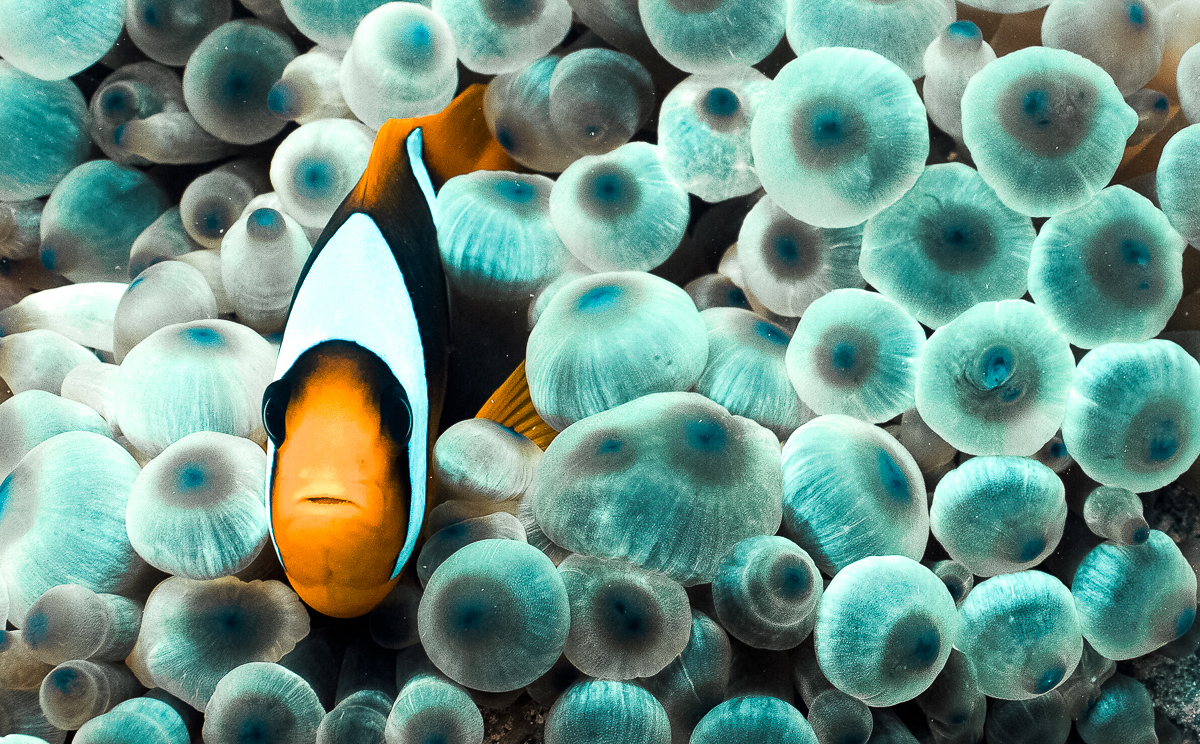
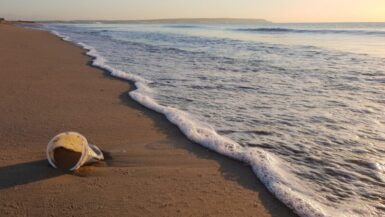
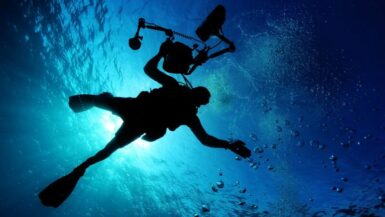
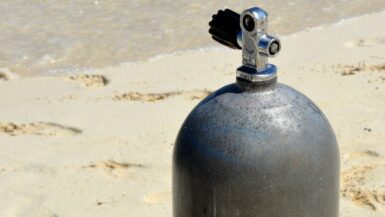
Your photos of A. melanopus are female A. frenatus
Thanks! I actually had confirmed that as well then forgot to come back and update. I just updated to reflect that though. 🙂
Is the purple tip anemone considered as a long testicle anemone. Or are they a different species.
[…] is also a variety of anemonefish that can be found at Anilao. What I found impressive was the amount of saddlebacks – […]